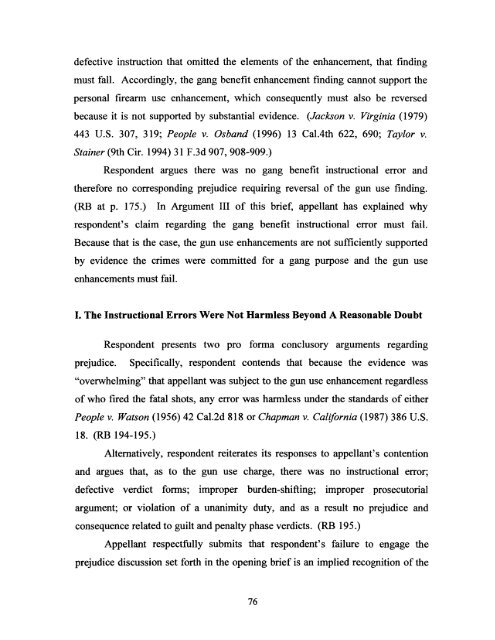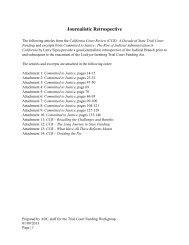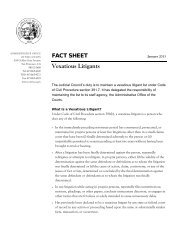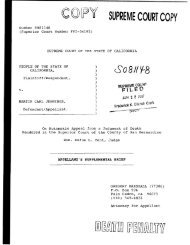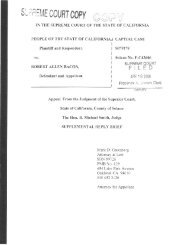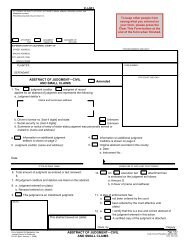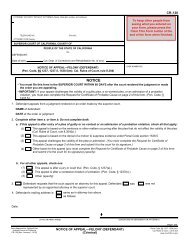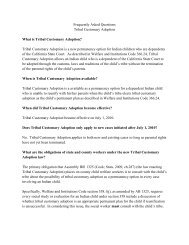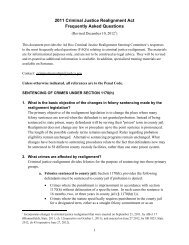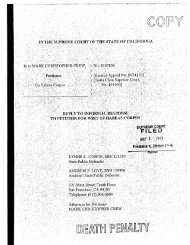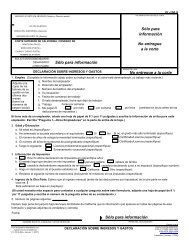Appellant, William Satele, Reply Brief - California Courts - State of ...
Appellant, William Satele, Reply Brief - California Courts - State of ...
Appellant, William Satele, Reply Brief - California Courts - State of ...
Create successful ePaper yourself
Turn your PDF publications into a flip-book with our unique Google optimized e-Paper software.
defective instruction that omitted the elements <strong>of</strong> the enhancement, that finding<br />
must fall. Accordingly, the gang benefit enhancement finding cannot support the<br />
personal firearm use enhancement, which consequently must also be reversed<br />
because it is not supported by substantial evidence. (Jackson v. Virginia (1979)<br />
443 U.S. 307, 319; People v. Osband (1996) 13 Cal.4th 622, 690; Taylor v.<br />
Stainer (9th Cir. 1994) 31 F3d 907, 908-909.)<br />
Respondent argues there was no gang benefit instructional error and<br />
therefore no corresponding prejudice requiring reversal <strong>of</strong> the gun use finding.<br />
(RB at p. 175.) In Argument III <strong>of</strong> this brief, appellant has explained why<br />
respondent's claim regarding the gang benefit instructional error must fail.<br />
Because that is the case, the gun use enhancements are not sufficiently supported<br />
by evidence the crimes were committed for a gang purpose and the gun use<br />
enhancements must fail.<br />
I. The Instructional Errors Were Not Harmless Beyond A Reasonable Doubt<br />
Respondent presents two pro forma conclusory arguments regarding<br />
prejudice. Specifically, respondent contends that because the evidence was<br />
"overwhelming" that appellant was subject to the gun use enhancement regardless<br />
<strong>of</strong> who fired the fatal shots, any error was harmless under the standards <strong>of</strong> either<br />
People v. Watson (1956) 42 Cal.2d 818 or Chapman v. <strong>California</strong> (1987) 386 U.S.<br />
18. (RB 194-195.)<br />
Alternatively, respondent reiterates its responses to appellant's contention<br />
and argues that, as to the gun use charge, there was no instructional error;<br />
defective verdict forms; improper burden-shifting; improper prosecutorial<br />
argument; or violation <strong>of</strong> a unanimity duty, and as a result no prejudice and<br />
consequence related to guilt and penalty phase verdicts. (RB 195.)<br />
<strong>Appellant</strong> respectfully submits that respondent's failure to engage the<br />
prejudice discussion set forth in the opening brief is an implied recognition <strong>of</strong> the<br />
76


